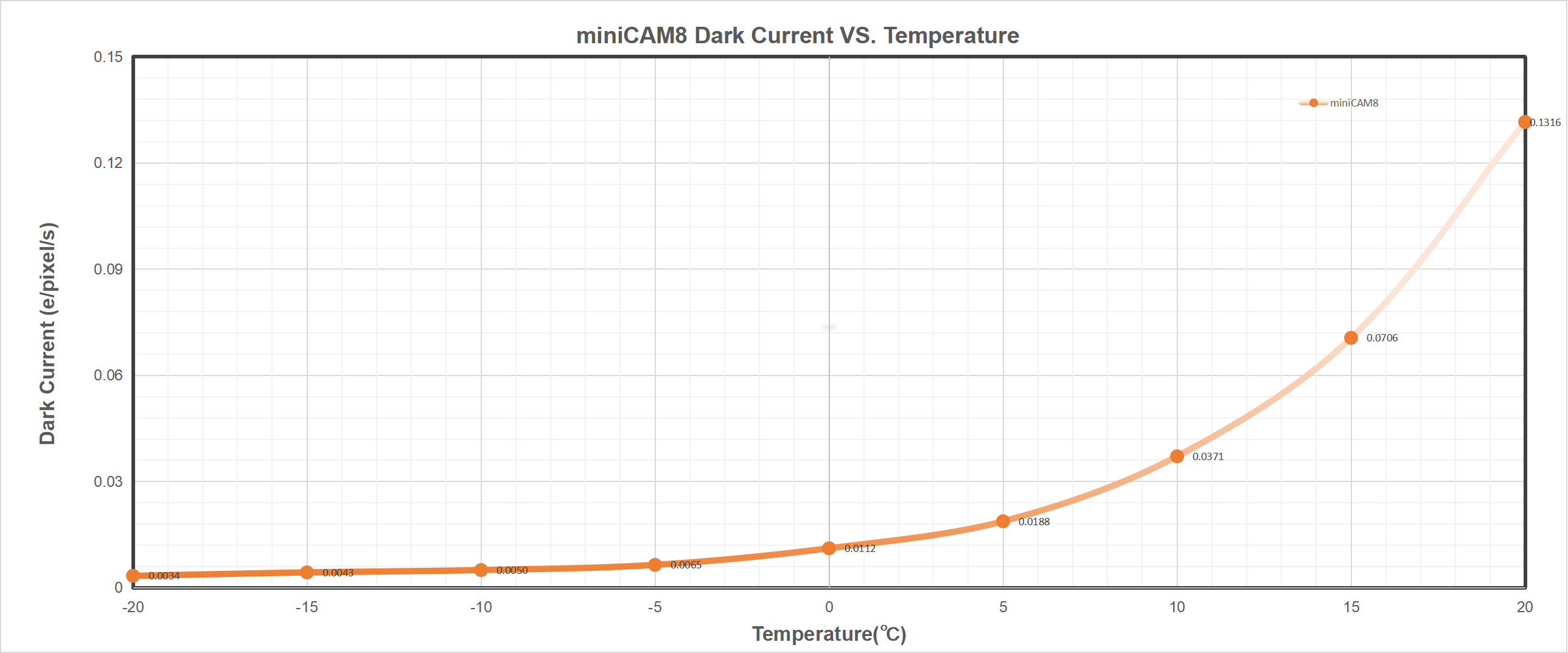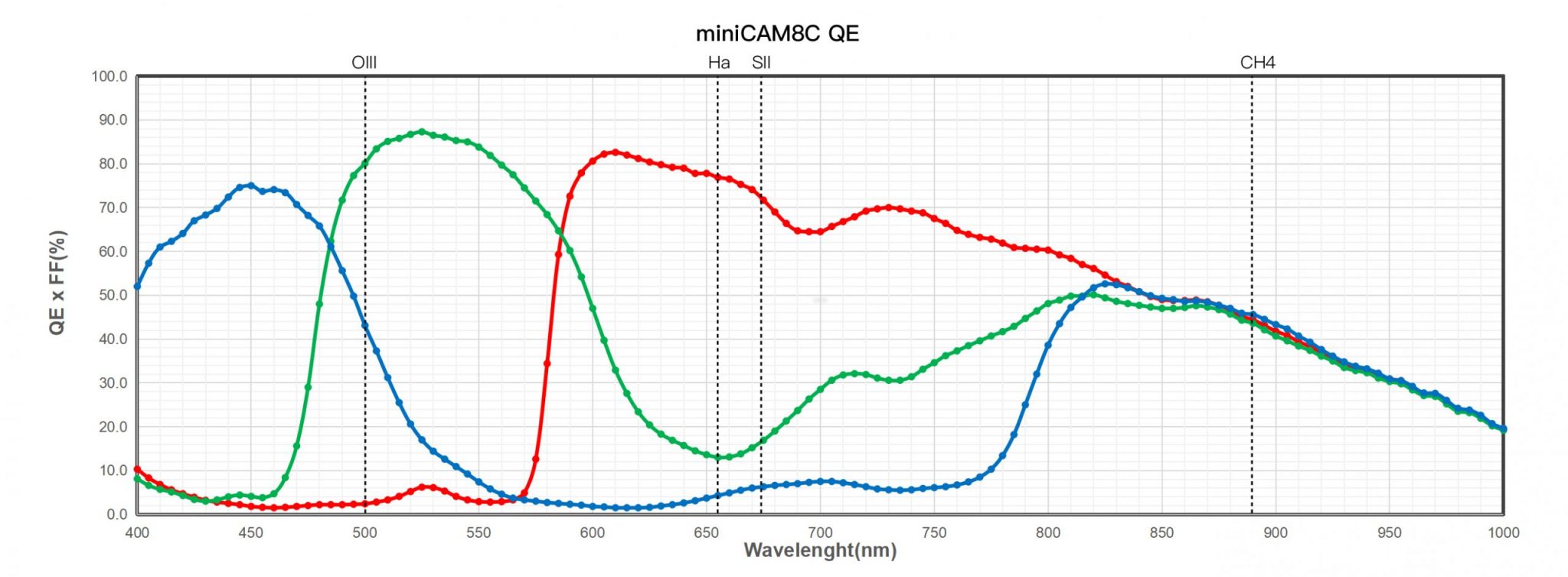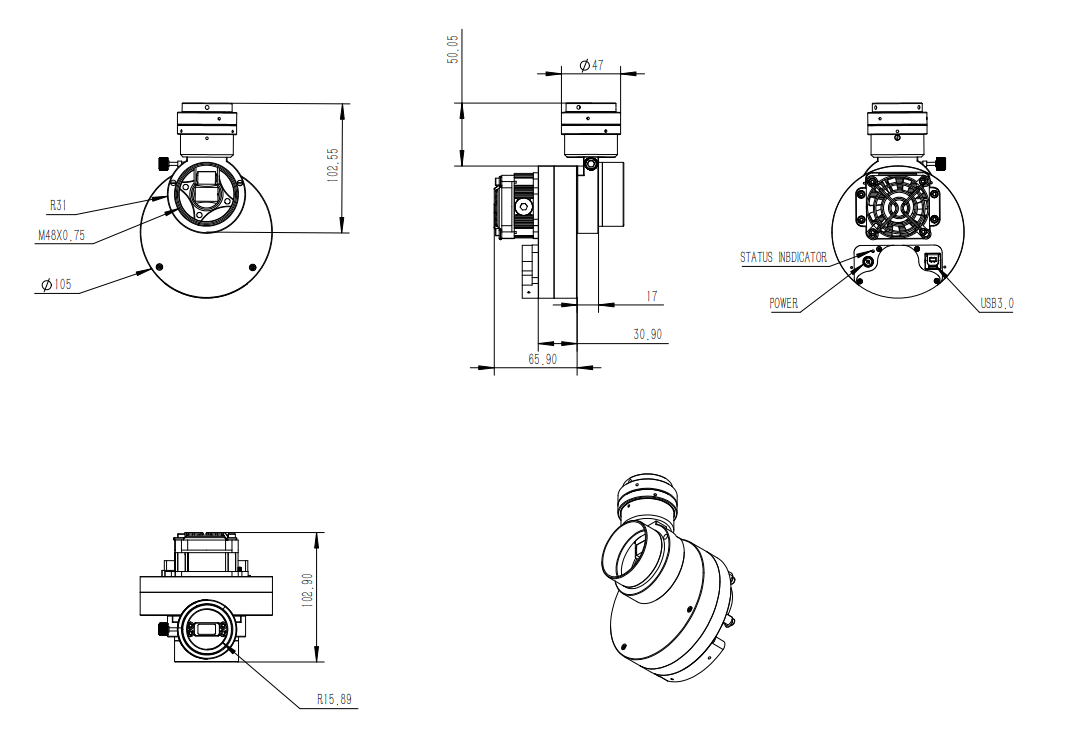QHYCCD miniCAM8-OAG — Oversized Prism Off-Axis Guider
The dedicated Off-Axis Guider for QHYCCD’s miniCAM8 features a large 14×10 mm prism to maximize light throughput to your guide camera, enabling higher guiding precision on faint stars. It uses a standard M48 telescope interface for straightforward integration and maintains a 55 mm back-focus optical path for compatibility with popular imaging trains. (Sold separately from the camera.)
- Large 14×10 mm pick-off prism for brighter guide stars
- M48 telescope interface for easy connection
- 55 mm back-focus spacing maintained for typical reducers/flatteners
- Purpose-built to match the QHY miniCAM8 form factor
What this OAG does
An Off-Axis Guider samples a small portion of the telescope’s light cone just outside the main sensor’s field, feeding a guide camera without the flexure typically seen with separate guide scopes. The miniCAM8-OAG’s oversized prism increases the chance of acquiring suitable guide stars, especially at longer focal lengths or narrowband imaging.
Installation guide (quick start)
- Thread the OAG’s M48 telescope side to your reducer/field flattener (or focuser adapter).
- Attach your imaging train on the camera side and confirm the total back-focus remains 55 mm.
- Insert and lightly secure your guide camera in the OAG’s guide port; start with the guide sensor near parfocal.
- Rotate the OAG body to position the prism so it does not vignette the imaging sensor (test with flats if needed).
- Focus the main camera, then adjust the guide camera drawtube to achieve guide focus; lock gently.
- Run a test exposure and a guide calibration; fine-tune prism height/rotation if you see edge shadows.
Key specifications (miniCAM8-OAG)
| Prism size | 14 × 10 mm |
|---|---|
| Telescope interface | M48 (female) |
| Back-focus | Maintains 55 mm imaging train spacing |
| Compatibility | Designed for QHY miniCAM8; standard guide-port accepts common small-format guide cameras |
| Use case | High-precision autoguiding with minimal flexure |
Note: Mechanical drawings and 3D files may be provided by the manufacturer. Add links below when available.
- 3D Mechanical Drawing:
- Mechanical Dimensions PDF:
miniCAM8 camera specifications (for reference)
These are the camera specs the OAG pairs with.
| Model | miniCAM8 |
|---|---|
| Sensor | Sony IMX585 (BSI), 1/1.2″, 3856 × 2180, 2.9 µm |
| Mono/Color | Both available |
| Effective pixels | 8 MP |
| Full well | 54 ke- (Linearity HDR: 46 ke-) |
| Read noise | 0.76–7.8 e- (Linearity HDR: 1.0 e-) |
| Peak QE | Mono: 92% (≈91.2% OIII, 80.9% Hα, 78.7% SII, 40.1% CH4); Color: R 82%, G 87%, B 75% |
| Dynamic range | Linearity HDR up to 46,300:1 (≈93 dB, 15.5 stops) |
| ADC | Dual 12-bit (output as 16-bit) |
| Frame rates | Full res: 41.5 fps @8-bit; 23.5 fps @16-bit. ROI: 1080 lines 82/47 fps (8/16-bit); 640 lines 177/105 fps (8/16-bit) |
| Exposure | 11 µs – 900 s, electronic rolling shutter |
| Buffer | 512 MB DDR3 |
| Interfaces | USB 3.0; Telescope: 1.25″ / 2″ / C-mount (thread protrusion <3.5 mm); Optic window AR+AR |
| Filter wheel | Built-in 8-position carousel |
| Back focal length | 17.5 mm (camera) |
| Cooling | Dual-stage TEC, typically −45 °C below ambient for exposures >1 s |
| Weight | 480 g |
Compatibility & notes
- Designed for the miniCAM8 body geometry and 55 mm spacing workflows.
- Guide camera back-focus may require minor spacing adjustment for parfocality.
- Check for sensor vignetting in flats when setting prism depth and rotation.
FAQs
Will the prism cause vignetting on the main sensor?
When set correctly, vignetting is minimized. Start with the prism just out of the main sensor’s field and verify with flat frames, then adjust as needed.
What guide cameras fit?
Most small-format guide cameras with standard 1.25″ nosepieces or matching guide-port threading are compatible. Ensure you have enough focus travel to parfocal with the main camera.
Does this replace a guide scope?
Yes. An OAG uses the main optical path to avoid differential flexure, improving guiding precision for long focal lengths and narrowband imaging.
| Model | miniCAM8 |
| CMOS Sensor | Sony IMX585 |
| Mono/Color | Both Available |
| BSI/FSI | BSI |
| Sensor Size | 1/1.2inch |
| Pixel Size | 2.9μm*2.9μm |
| Total Pixel Area | 3856*2180 |
| Effective Pixels | 8 MP |
| Full Well Capacity | 54ke-
Linearity HDR Mode: 46ke- |
| Readout Noise | 0.76 – 7.8 e-
Linearity HDR Mode: 1.0e- |
| Peak QE | M: 92%
C: R: 82%; G: 87%; B: 75% |
| Dynamic Range | Linearity HDR mode: The dynamic range reaches up to 46,300:1, equivalent to 93 dB or 15.5 stops. |
| A/D | Dual 12-bit (output as 16-bit) |
| Full Frame Rates | Full Resolution: 41.5FPS@8bit,23.5FPS @16bit |
| ROI Frame Rates | Full Resolution 1080Lines, 82FPS@8bit, 47FPS@16bit;640Lines, 177FPS@8bit, 105FPS@16bit |
| Exposure Time Range | 11μs-900sec |
| Shutter Type | Electronic Rolling Shutter |
| Built-in Image Buffer | 512MB DDR3 |
| Computer Interface | USB3.0 |
| Telescope Interface | 1.25,2 inch , C-mount lens ( The C-mount lens thread must be less than 3.5mm) |
| Optic Window Type | AR+AR |
| Filter Wheel | Built-in 8-Position Carousel |
| Back Focal Length | 17.5mm |
| Cooling System | Dual Stage TEC cooler:
Long exposures (> 1 second) typically -45℃ below ambient |
| Weight | 480g |













